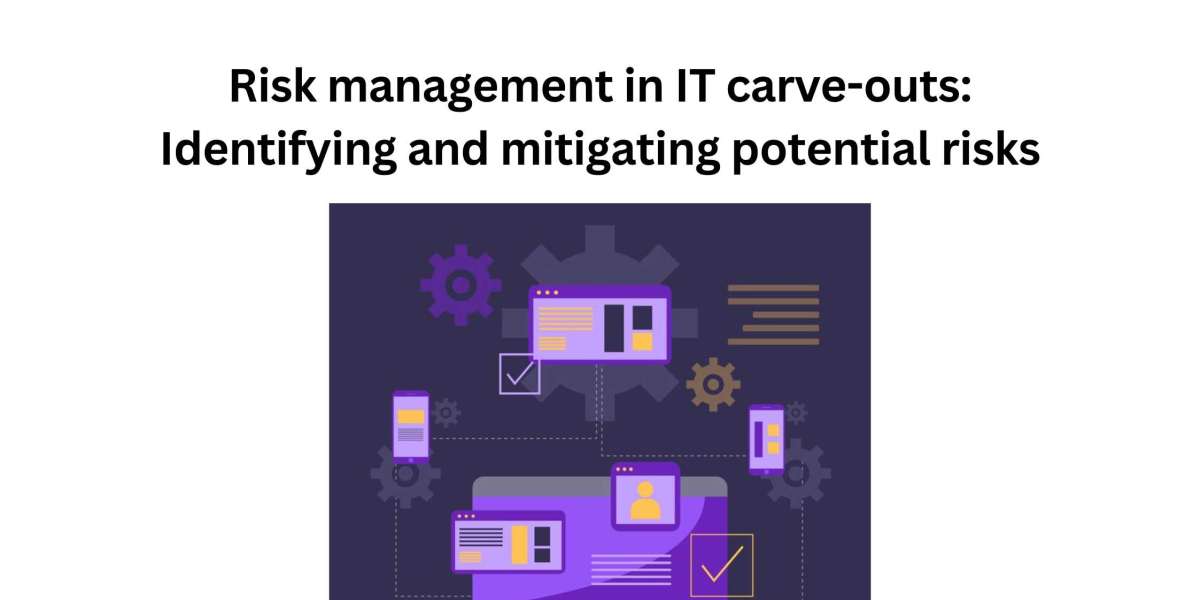In the fast-paced world of business, IT carve-outs have become increasingly common as organizations seek to streamline operations, divest non-core assets, and drive strategic growth. However, with these carve-outs come a host of potential risks that can jeopardize the success of the endeavor. Effective risk management is essential to navigate the complexities of IT carve-outs and ensure a smooth transition. In this blog, we’ll explore the key risks associated with IT carve-outs and strategies to mitigate them, helping organizations embark on this journey with confidence.
Introduction: Understanding IT Carve-Outs
Before delving into risk management, let’s first define what we mean by IT carve-outs. An IT carve-out refers to the process of separating a portion of an organization’s IT infrastructure, systems, or services to create a standalone entity. This could involve spinning off a division, selling a subsidiary, or outsourcing specific IT functions. While IT carve-outs can offer significant benefits such as increased agility and cost savings, they also pose unique risks that must be addressed.
1. Data Security and Privacy Concerns
One of the most significant risks associated with IT carve-outs is the potential compromise of data security and privacy. During the transition process, sensitive information may be exposed to unauthorized access or inadvertently transferred to the wrong party. To mitigate this risk, organizations must conduct thorough data audits, implement robust encryption protocols, and establish clear data governance policies to safeguard sensitive information throughout the carve-out process.
2. Operational Disruption
Carving out IT functions can disrupt business operations, leading to downtime, delays, and decreased productivity. This disruption can have far-reaching consequences, impacting customer satisfaction, revenue generation, and employee morale. To minimize operational disruptions, organizations should develop comprehensive transition plans, communicate effectively with stakeholders, and conduct thorough testing and training to ensure a seamless transition to the new IT environment.
3. Legal and Regulatory Compliance
Navigating the complex legal and regulatory landscape is another critical aspect of IT carve-outs. Organizations must ensure compliance with various laws and regulations governing data protection, intellectual property rights, employment contracts, and corporate governance. Failure to adhere to these requirements can result in costly fines, lawsuits, and damage to the organization’s reputation. To mitigate legal and regulatory risks, organizations should engage legal counsel early in the process and conduct thorough due diligence to identify and address potential compliance issues.
4. Vendor Management Challenges
Many IT carve-outs involve the transfer of contracts and relationships with third-party vendors and service providers. Managing these relationships can be challenging, as vendors may have different contractual obligations, service levels, and pricing structures. To mitigate vendor management risks, organizations should conduct a thorough review of existing contracts, negotiate new agreements where necessary, and establish clear communication channels with vendors to ensure continuity of service throughout the carve-out process.
5. Financial Implications
IT carve-outs can have significant financial implications, including upfront costs for separation activities, ongoing operational expenses, and potential revenue losses during the transition period. Organizations must carefully assess the financial viability of the carve-out and develop realistic budgets and forecasts to ensure financial stability throughout the process. Additionally, organizations should consider the impact of the carve-out on their overall financial performance, including potential tax implications, accounting treatment, and valuation considerations.
6. Employee Retention and Morale
The uncertainty surrounding IT carve-outs can take a toll on employee morale and retention. Employees may feel anxious about their job security, career prospects, and the future of the organization. To mitigate these risks, organizations should prioritize transparent communication, provide regular updates on the carve-out process, and offer support and resources to employees affected by the transition. Additionally, organizations should develop retention strategies to incentivize key talent to remain with the company throughout the carve-out process.
7. Reputational Risk
Lastly, IT carve-outs can pose significant reputational risks for organizations, particularly if the process is mishandled or perceived negatively by stakeholders. Negative publicity, stakeholder backlash, and damage to brand reputation can have lasting consequences for the organization’s credibility and market standing. To mitigate reputational risks, organizations should prioritize transparency, integrity, and accountability throughout the carve-out process, ensuring that all stakeholders are informed and engaged and that the organization’s reputation remains intact.
Conclusion: Navigating the Complexities of IT Carve-Outs
In conclusion, effective risk management is essential to navigate the complexities of IT carve-outs and ensure a successful transition. By identifying potential risks and implementing strategies to mitigate them, organizations can minimize disruptions, safeguard sensitive information, and protect their financial stability and reputation throughout the carve-out process. With careful planning, clear communication, and proactive risk mitigation measures, organizations can embark on IT carve-outs with confidence, realizing the strategic benefits and value creation opportunities that lie ahead.
#AvenDATA #carveout #datacarveout #sapcarveout #legacysystems #dataarchiving








